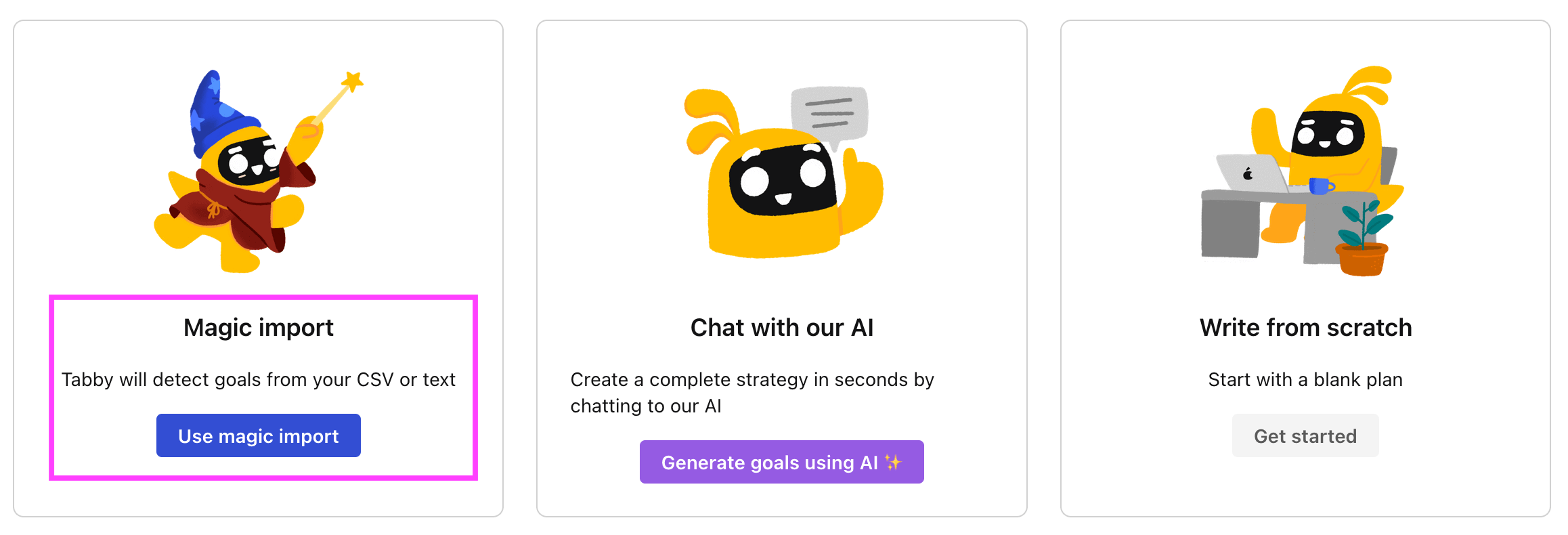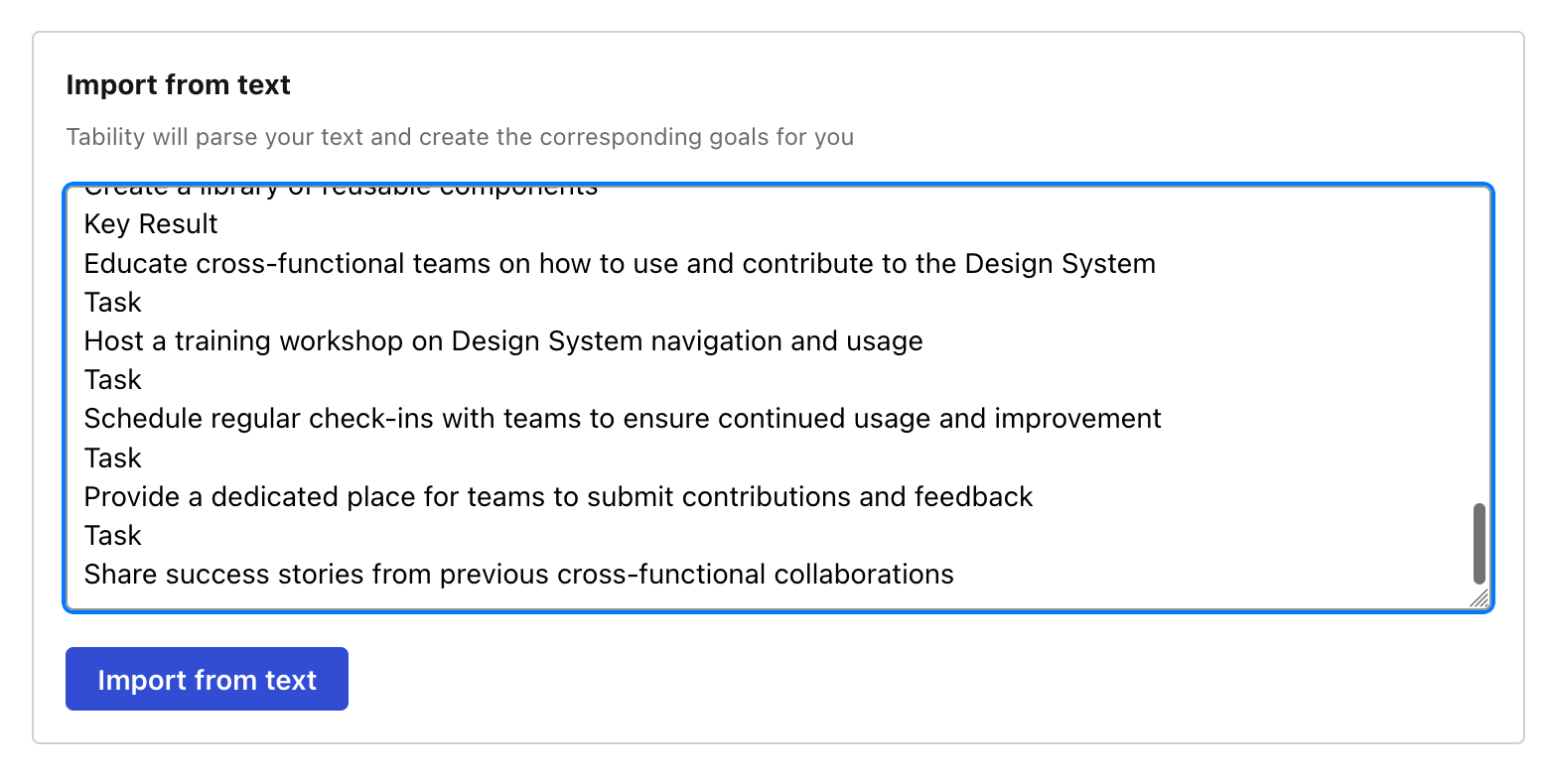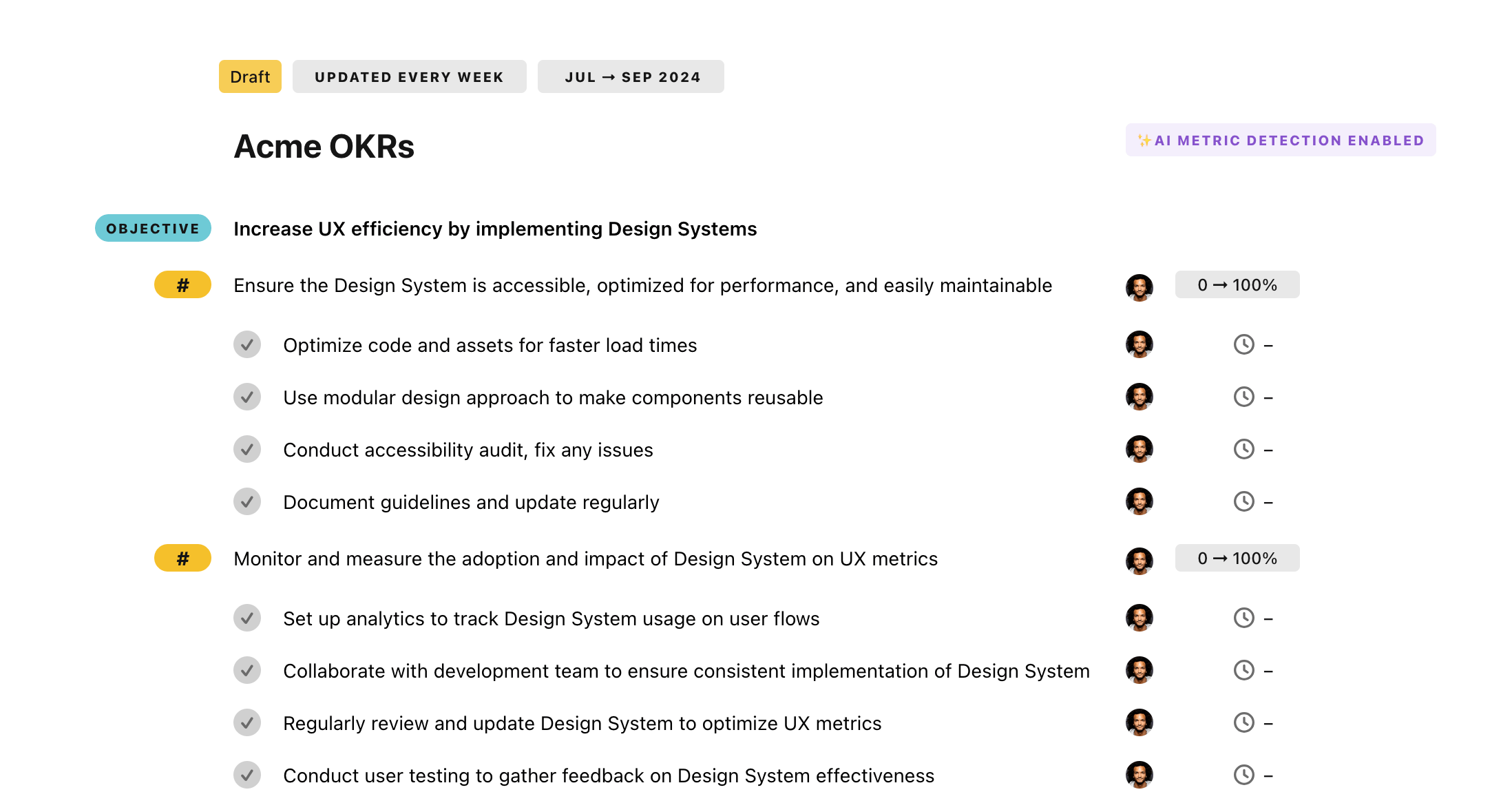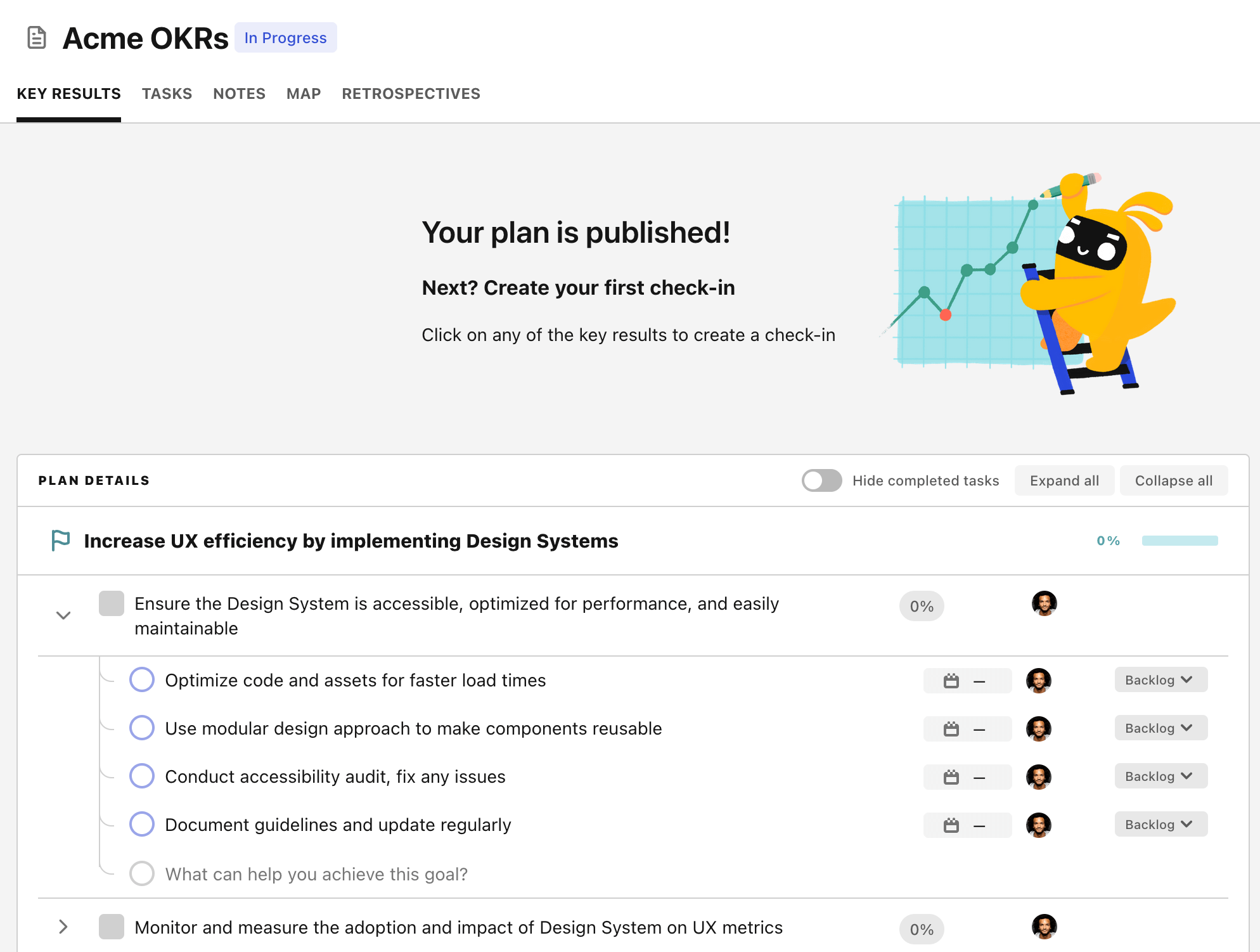OKR template to enhance risk management in the finance department
Your OKR template
The second objective is to develop and train staff on three new risk mitigation strategies. This involves identifying and outlining the strategies, preparing a comprehensive training program around them, and scheduling and conducting the training for the staff.
The third part of the OKR involves implementation of risk assessment tools to discover 20% more financial risks. This will entail choosing the right tools, training staff on how to use them correctly, and continuously monitoring and measuring their effectiveness.
The OKR's overall goal is to strengthen the risk management capacity of the finance department, ensuring fewer losses due to risk occurrence and increasing the department's capabilities in identifying potential risks through effective risk assessment tools and strategies.
ObjectiveEnhance risk management in the finance department
KRDecrease risk-related financial losses by 15%
Strengthen internal audit procedures
Provide staff training on risk management
Implement regular financial risk assessment strategies
KRDevelop and train staff on 3 new risk mitigation strategies
Identify and outline 3 new risk mitigation strategies
Prepare a comprehensive training program around these strategies
Schedule and conduct training sessions for staff
KRImplement risk assessment tools to identify 20% more financial risks
Choose appropriate risk assessment tools
Train staff on proper tool usage
Monitor and measure effectiveness regularly
How to edit and track OKRs with Tability
You'll probably want to edit the examples in this post, and Tability is the perfect tool for it.
Tability is an AI-powered platform that helps teams set better goals, monitor execution, and get help to achieve their objectives faster.
With Tability you can:
- Use AI to draft a complete set of OKRs in seconds
- Connect your OKRs and team goals to your project
- Automate reporting with integrations and built-in dashboard
Instead of having to copy the content of the OKR examples in a doc or spreadsheet, you can use Tability’s magic importer to start using any of the examples in this page.
The import process can be done in seconds, allowing you to edit OKRs directly in a platform that knows how to manage and track goals.
Step 1. Sign up for a free Tability account
Go tohttps://tability.app/signup and create your account (it's free!)
Step 2. Create a plan
Follow the steps after your onboarding to create your first plan, you should get to a page that looks like the picture below.

Step 3. Use the magic importer
Click on Use magic import to open up the Magic Import modal.
Now, go back to the OKR examples, and click on Copy on the example that you’d like to use.

Paste the content in the text import section. Don’t worry about the formatting, Tability’s AI will be able to parse it!

Now, just click on Import from text and let the magic happen.

Once your example is in the plan editor, you will be able to:
- Edit the objectives, key results, and tasks
- Click on the target 0 → 100% to set better target
- Use the tips and the AI to refine your goals
Step 4. Publish your plan
Once you’re done editing, you can publish your plan to switch to the goal-tracking mode.

From there you will have access to all the features that will help you and your team save hours with OKR reporting.
- 10+ built-in dashboards to visualise progress on your goals
- Weekly reminders, data connectors, and smart notifications
- 9 views to map OKRs to strategic projects
- Strategy map to align teams at scale